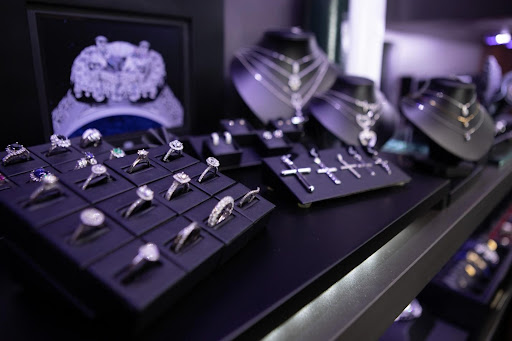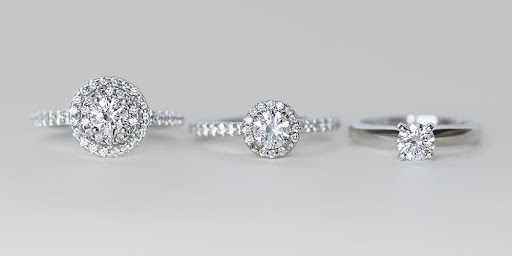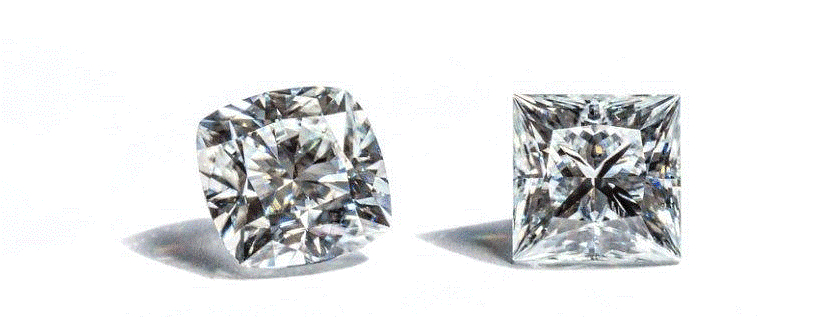Diamonds may be found in a wide range of shapes, sizes, and colors. A diamond's worth is determined by its unique mix of qualities, and these traits are also what make a diamond one-of-a-kind. Because of this, you need to know what to look for when purchasing a diamond. To begin, familiarize yourself with the 4Cs of diamond quality.
"After all, diamonds are pricey," the American Gem Society (AGS) marks out. It is important for you to know that what you've paid for is what you're receiving. An expert jeweler or appraiser can tell you the value of a diamond based on their expertise and experience. Your diamond may be graded using a systematic scoring system for particular properties by jewelers and qualified graders.

Consumers, on the other hand, benefit from learning something about diamonds before making a purchase. This is a wonderful thing, since you can use the same grading method that jewelers and gem experts use.
The 4Cs are the acronym for these. When all of these factors are taken into account, a clear image of the diamond's quality emerges.
As far as diamond quality is concerned, all four of the 4Cs should be taken into account. It's also vital to note that the diamond's official certification is just as significant.
Let's take a deeper look at five methods that professionals use to determine the grade of a diamond.

Carat weight is by far the most important of the 4Cs. Digital scales are calibrated to measure the carat weight of diamonds. The carat weight of a diamond is often related with its quality and value since bigger diamonds are generally more valuable than smaller ones.
You may be aware with fractional carat weight delineations for diamonds, such as one-quarter, one-half, one, etc., but carat weight is best expressed using decimals. 1 carat diamonds may really weigh 0.89 carats, a frequent rounding procedure employed in retail outlets to increase the perceived worth of a piece. If all other conditions are equal, a 0.89 carat diamond should cost much less than a real one carat stone.
In addition, it is important to know that not all carat weights are the same. Carat weight is just one of several elements that determine a diamond's value. Because of this, a 2 carat diamond with a lower quality of color, cut, and clarity may cost less than a 1 carat diamond of the same grade. To put it another way, this quality assessment might give you an incorrect idea about the worth of a product. Comparing diamonds by carat weight is like measuring the worth of artworks by their dimensions, according to AGS.
Even if two diamonds have the same carat weight, one may seem larger than the other. Why? Some diamonds seem larger than others because of their form. Although they are each one carat in weight, a round or emerald cut diamond may seem bigger than a cushion cut diamond. The form of the diamond is to blame, and your eyes aren't playing tricks on you.
When assessing the quality of your diamond, don't only focus on its weight.

Your diamond's color quality has a significant influence on its value. The ideal diamond is colorless, and any trace of color diminishes its value significantly. Diamonds with yellow or brown tints are less valuable and of lower quality as the color scale goes down.
According to the Gemological Institute of America, "Many of these color differences are so minute as to be imperceptible to the inexperienced sight" (GIA). "However, even little changes have a huge impact on the quality and price of diamonds."
Despite this, there is one exception. If the color is considered to be a 'fancy color', such a canary yellow or the pinnacle in rarity, a red diamond, it will not diminish the value of the diamond. These hues, in fact, may boost the value of a diamond significantly.
Diamonds are graded on a 23 color grading system that ranges from D to Z in terms of color quality. Each letter corresponds to one of five color quality subcategories.
A diamond's value and quality increase in direct proportion to how close it is to being colorless; however, color is one of the 4Cs that is highly subjective. When looking at a diamond's hue, the environment around it might have an impact on how it appears. Color may also be affected by the setting and the metal used in the setting. Statistically, women are more sensitive to color distinctions in diamonds than males, as well.

The diamond's hue is an essential consideration. Diamonds with a "S" color rating may not be as stunning as diamonds with a "N" color grade. Take a page from the experts if you wish to evaluate a stone's color quality on your own. In a well-lit room, place the diamond face down on a white sheet of paper. Using this technique, you'll be able to see any subtle variations in hue more clearly, allowing you to settle on a price point that suits your needs. While color is evaluated from the bottom, diamonds are seen from the top, so before discounting a color grade, take a look at the overall appearance of the stone.
Another important consideration is the diamond's clarity grade. Unlike a flawless diamond, which is free of inclusions and flaws, a poor clarity diamond would include inclusions visible to the naked eye as well as surface flaws such as chipping.
What is the significance of a diamond's clarity? Because of the belief that diamonds with a better clarity are rarer in nature, clarity is regarded crucial in the value of a diamond. It is not only that clarity affects a diamond's rarity; a diamond with a very low clarity grade would be less dazzling and even have a hazy look. Inclusions around the diamond's edges increase the risk of chipping, breaking, and even shattering in diamonds with lower clarity grades.
Under 10x magnification, the diamond's clarity properties are rated. After that, a clarity scale with 11 grades is used to determine the quality of the clarity. Furthermore, these grades are critical for you to comprehend.
Diamonds with no visible flaws are very uncommon, and as a result, extremely valuable. Diamonds of lesser clarity grades, on the other hand, might seem perfect to the human eye. "Eye clean" diamonds are diamonds that seem perfect, even if they aren't truly flawless. This indicates there aren't any inclusions in the diamond that can be seen with the naked eye. Because eye-clean diamonds are far less costly than perfect diamonds, most buyers feel confident purchasing them.
Diamonds may be examined under magnification using a jeweler's loupe for a closer look, although this method can be difficult for the untrained eye to determine clarity. The beautiful lights of a jewelry shop are particularly meant to enhance brilliance and to mask evident clarity qualities, so make sure that you look at the diamond outside of these lights.

A diamond's cut quality is very important from an aesthetic standpoint. Every angle and facet of your diamond interacts wonderfully with light, which is why it is so important to have a well-cut diamond. Fancy shape stones (diamonds that aren't round) have a more difficult time being judged on their cut quality since it is more difficult to compare them side by side.
Diamonds with a better cut quality will have greater fire and brilliance, according to AGS.
The perfect cut encompasses these three optical effects, making your diamond stunning:
Quality cutting is all about creating the correct contrast between your diamond's light and dark parts, resulting in a spectacular, sharable sparkle.
There is a 10-point cut quality scale used by the AGS and other respectable diamond graders, however various grading labs use somewhat different terminology. Understanding how your diamond's cut is graded is critical to determining its value.
The cut quality for AGS grading ranges from:

When it comes to determining a diamond's quality, the 4Cs are an absolute need. As a result, before to making a purchase, it is critical to understand where each diamond falls on the 4C grading scales. However, relying only on the advice of a jeweler is not the best course of action. Take a look at the diamond's official certification to check its grade.
It's a third-party verification of the diamond's quality. Neither the diamond buyer nor the diamond seller can certify this. Diamond frauds have made these more significant.
The diamond's cut, color, clarity, and carat weight will all be included in the certification. There will be a computer-generated picture in the report that shows where each inclusion is located, for example. It will also reveal the diamond's varied dimensions via the use of a computer produced picture. You can see where the diamond falls on the color, cut, and clarity grading scales by looking at this photograph.
Security mechanisms included into diamond certifications guarantee that they are authentic. Most respected diamond graders in America and Europe are responsible for issuing them.
The top diamond graders in the U.S. and Europe are:
Diamond quality can only be assured if it has been confirmed by one of the aforementioned diamond graders. GIA offers an online "Report Check" for diamonds. Your report may be checked by entering the certificate number at the top of it.
You should conduct some investigation to ensure that the certificate offered by any other grading institution is not held by the individual selling you the stone. It is important to you that the diamond's quality be reported in an objective manner.
Before you buy a diamond, you need to know what to look for in order to ensure its quality. For the most accurate information, you need to know the 4Cs and understand why it's critical to have an independent gemological laboratory issue a diamond certification.
Before making one of the most significant purchases of one's life, one should be well-informed on the various factors that contribute to a diamond's sparkle. Visit diamondregistry.com's diamond quality section for further information.
Sell your diamonds with ease with Diamond Registry’s comprehensive approach and vast global industry connections to help you find the best buyer for your diamond fast. Fast, easy and reliable way of selling your diamond.
Want to check and calculate diamond per carat instantly? Go to DR’s diamond price calculator to know how. Reliable and trusted carat calculator in the diamond industry since!

